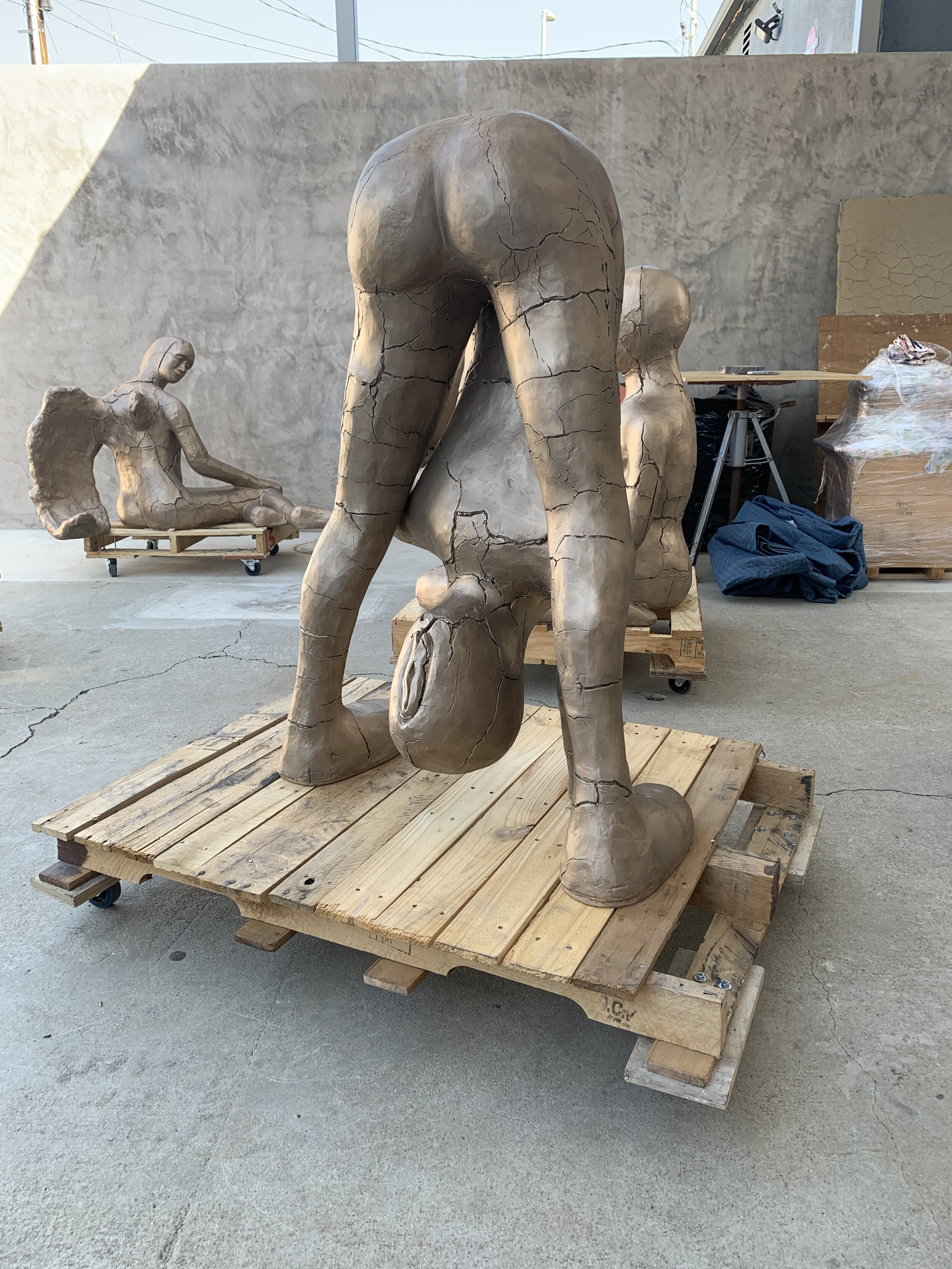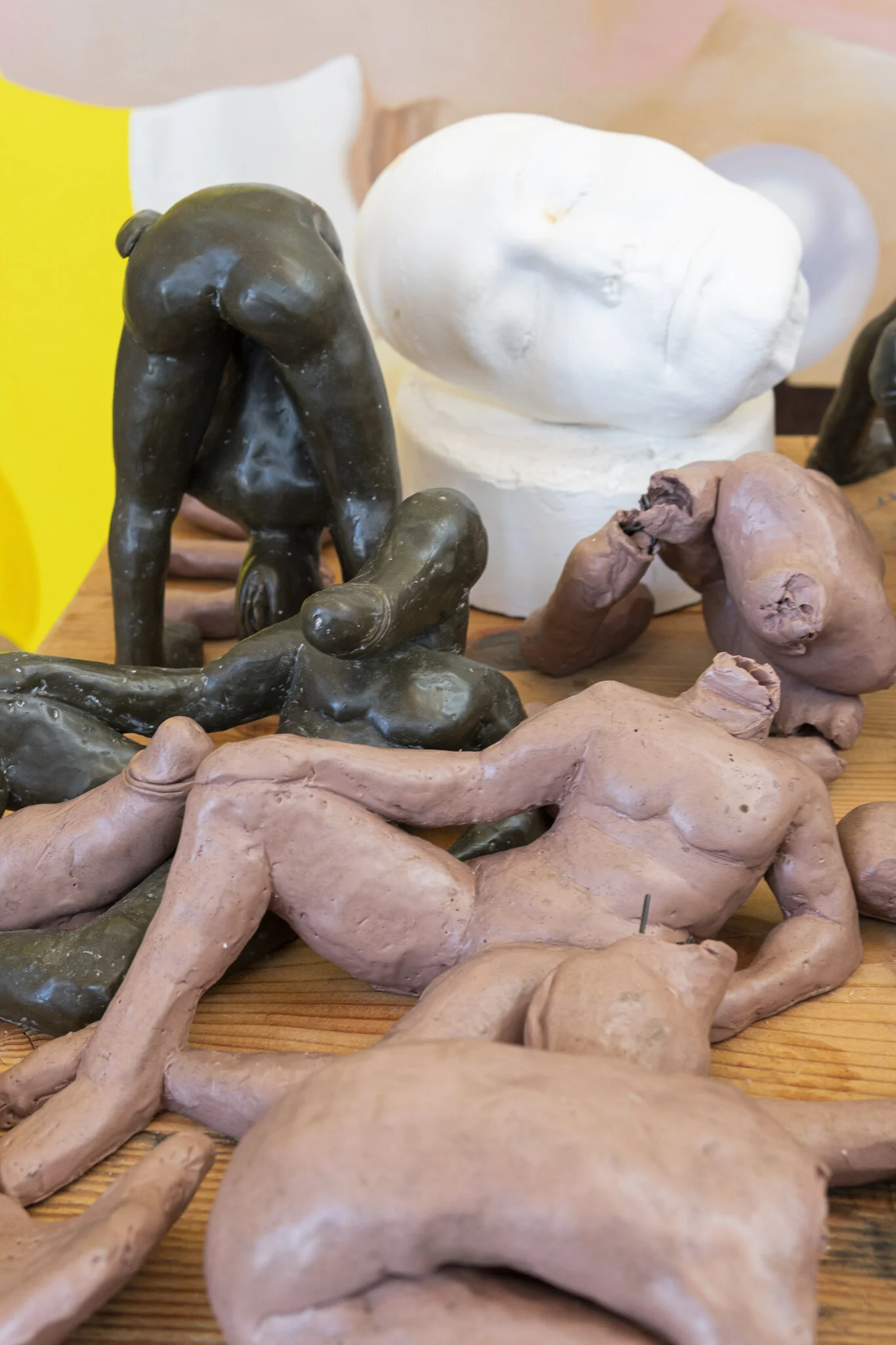GODOG, 2020
“Pussy Buddha,” Fawn Rogers, 2020
GODOG
In both real and imagined histories, the concept of palimpsest reflects the evolution, erosion, erasure, stratification and reinvention of societal and material formations. Arguably most compellingly in the history of art, the female form exemplifies this palimpsest: deified and objectified, elevated and denigrated, at once transformed and transformative. Playfully coalescing the divine and the banal, GODOG re-envisions sex, power, and the representation of the female form.
From the earliest sculptures to contemporary works in an array of media, the ‘Venus’ figure has informed human art for millennia. The earliest undisputed depiction of a human being, the Venus of Hohlen Fels, was crafted from the tusk of a woolly mammoth c. 36,000 BCE. Venus figures have been recovered both in caves and open-air locations, sacred and ceremonial locales, as well as burial places throughout the world. Symbolizing fertility, sensual pleasure, creation, ritual, and death.
Throughout art history, female representation runs from shame to worship. Portrayed with conflicting roles as in Mary Magdalene the saint or whore, Gian Lorenzo Bernini’s Bust of Constanza Bonarelli. Gustave Courbet’s L’Origine du monde painting was regarded as blasphemous upon its inception, portrays the vagina as the anatomical and material origin of human life, and underscores the fraught and multifaceted historical relationship to female sexuality and the male gaze. The resurgence of goddess cults in the late 20th century and the significant re-envisioning of the Venus motif in works such as the Met’s Facade Commission of Wangechi Mutu, Salvador Dali’s Venus with Drawers, Jeff Koons’ Balloon Venus, Takashi Murakami’s Miss Ko2, Louise Bourgeois’ Nature Study, and Sarah Lucas’ Random Mother and Nice Tits. These works exemplify the refracted notions of subject and object, representation and volition with regard to the female form.
In the GODOG family, Pussy Buddha, Angel and Hello among others, viscerally engage with this legacy, tracing transhistorical resonances both aesthetically and thematically. The reimagined Venus figures are at once subject and object, goddess and plaything, both idol and provocateur. This coterie of figures embodies a diverse array of gender and post-gender ideals. A lounging male figure captures the sensual languor of the Sleeping Hermaphroditus, considered by the Romans to represent the height of love. An angel with two faces displays both masculine and feminine elements. Conjuring the fetish objects of ancient worship rites, two phallus-headed figures subsist in dialogue with the Pussy Buddha. Her configuration, unapologetically featuring her genitalia as countenance, recalls the oyster, who’s self-contained gender fluidity resists hierarchical and binary gender structures.
Unflinchingly engaged with both material and conceptual evolution, GODOG offers a current, historically situated yet forward-looking approach to pleasure, transformation, and transcendence. —Claudia Grigg Edo
Timelapse film of “GODOG,” Fawn Rogers, 2020
Studio view
“GODOG” series, Fawn Rogers, 2020
Studio view
Studio view
Bronze Commission, Fawn Rogers, 2020



















